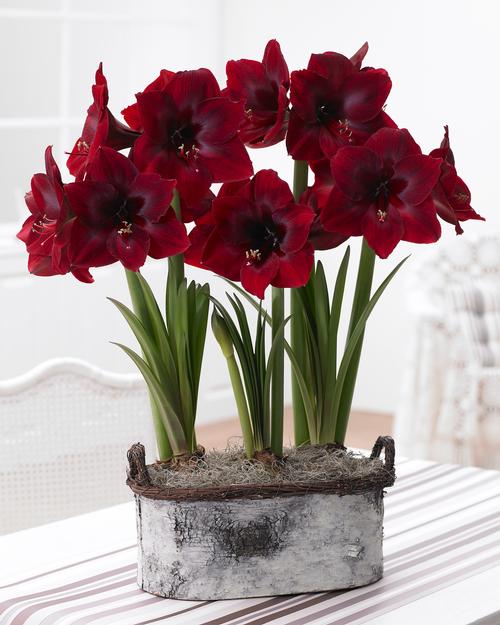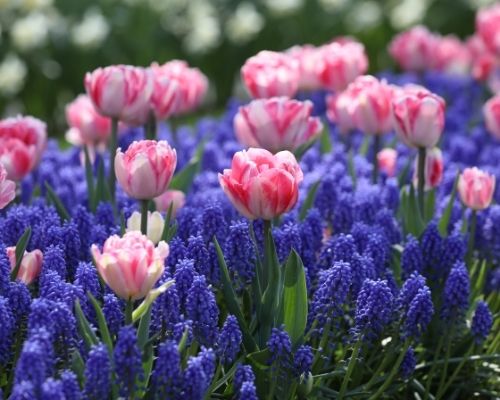Enhance Your Garden With the Beauty of Bulbs
Flowering bulbs have an important advantage over regular plants: they can store energy from one growing season to the next. When a bulb starts to grow, it uses these stored reserves to develop roots, shoots, leaves and flowers. Being so self-sufficient means that flower bulbs don’t have to wait for perfect weather or ideal soil conditions. By nature, they already have what they need to thrive.
Bulbs are Easy
Flower bulbs are perfectly packaged for easy planting. Just dig a hole and drop in the bulb. Most bulbs aren’t very particular about where they are planted. They will grow as well in pots and containers, as they do in flower gardens, beneath trees and shrubs, and in woodlands, meadows and even lawns. Planting flower bulbs doesn’t require any special knowledge or experience. Simply plant the bulbs and wait for the flowers.
Bulbs are Bountiful
Nothing says spring like a field of naturalized daffodils or a flower bed filled with brightly colored tulips. Spring-blooming bulbs always put on a great show, brightening chilly grey days with their vivid, paint-box colors. Summer-blooming bulbs produce some of the garden's biggest and most spectacular flowers. An Oriental-Trumpet lily can reach 7-feet tall and produce 20 or more fragrant blossoms per stem; one dahlia plant can generate a dozen or more flowers every week from summer through fall. In winter, amaryllis bulbs produce huge, brilliantly-colored blossoms indoors, with nothing more than water and a little sunshine.
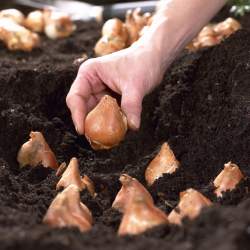
Bulbs are Dependable
Each type of flower bulb blooms at a particular time of year and has its own proper planting time. If you want to grow spring-blooming tulips, daffodils or alliums, the bulbs need to be planted in the fall for flowers the next spring. Summer-blooming bulbs, such as dahlias, calla lilies and gladiolas are planted in spring for flowers in summer and fall. Amaryllis and paperwhite bulbs are planted in early winter for indoor flowers in midwinter. Flowering bulbs can provide color, fragrance and beauty almost every month of the year.
Plant These Bulbs for Spring Time Flowers
When most people think about “flower bulbs” they picture tulips, daffodils, hyacinths and crocus. These spring-blooming bulbs are loved the world over for their brilliant colors and weatherproof vigor. The earliest bulbs start flowering as the snow melts, and others follow in quick succession, providing months of color while most other plants are still waking up. Spring-blooming bulbs are planted in mid to late fall. Once they are in the ground, the bulbs will quickly develop roots before going to sleep until spring. Spring-flowering bulbs include:
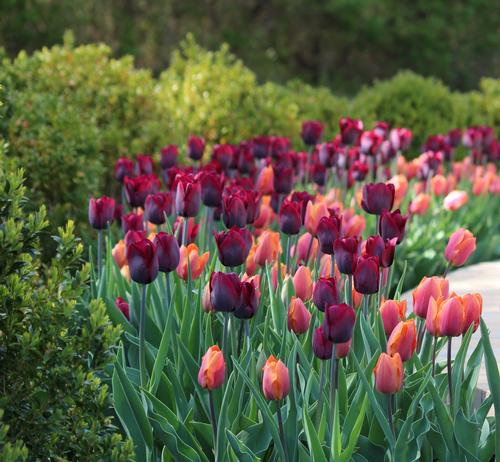
Snowdrops
Crocus
Daffodils
Scilla
Chionodoxa
Tulips
Muscari
Hyacinths
Fritillaria
Alliums
Dutch Iris
Anemones
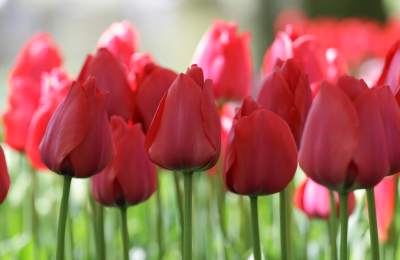
Plant These Bulbs for Flowers in Summer and Fall
Bulbs such as dahlias, canna lilies and gladiolas are heat-loving, tropical plants that won’t tolerate freezing temperatures. Plant these bulbs in the spring, after all danger of frost has passed. Summer-blooming bulbs begin flowering in mid-summer and continue through fall, right until the first frost. They keep gardens and landscapes colorful long after other types of flowers have faded. Summer-flowering bulbs include:
Dahlia
Gladiolus
Lily
Tuberous Begonia
Canna Lily
Calla Lily
Caladiums
Elephant Ears
Eucomis
Acidanthera
Nerine
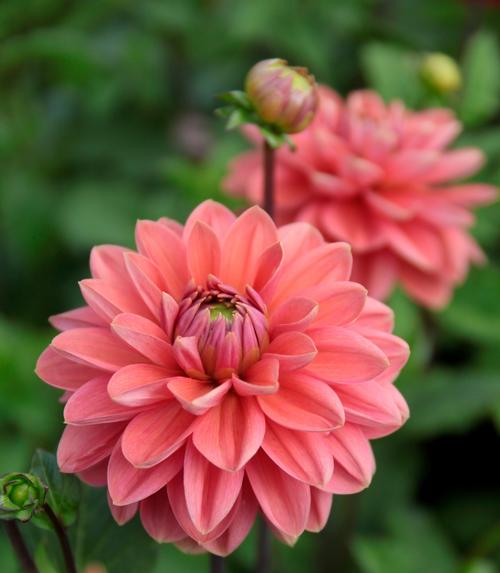
PLANT THESE BULBS IN WINTER
When spring and summer bulbs have finished blooming, it’s time for winter-blooming bulbs such as amaryllis and paperwhites. Plant these bulbs indoors from November through March, and enjoy flowers 4 to 12 weeks later.
Flowering bulbs aim to please and they make it easy for gardeners to be successful. Simply choose the colors, styles and combinations you like, and enjoy an endless display of brilliant colors, attractive foliage and wonderful fragrances.
